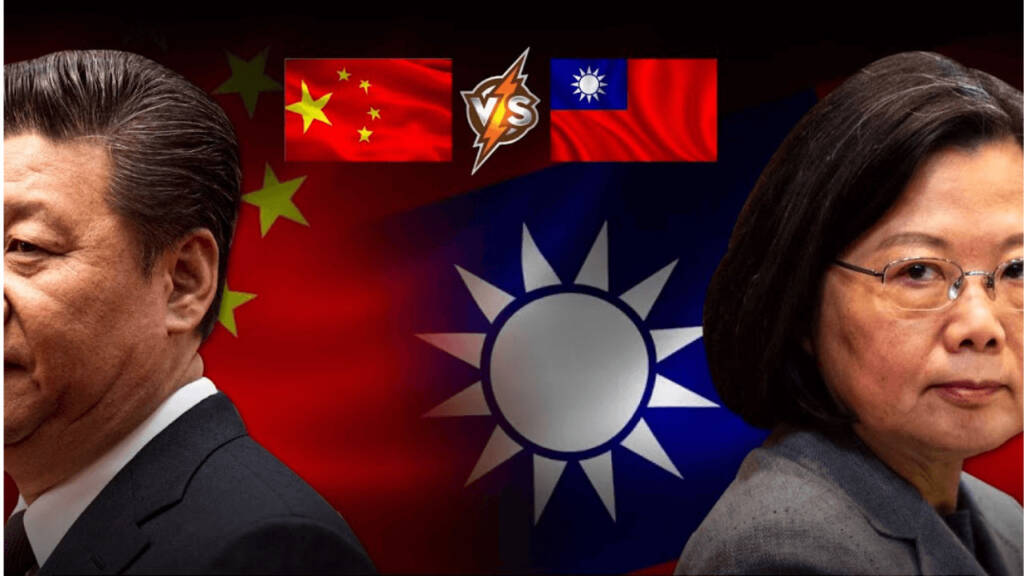The China-Taiwan issue is one of the most complex and highly politicized geopolitical disputes on the global stage. Both nations share a common historical and cultural heritage, but their paths diverged significantly during the 20th century. They are locked in a complex and tense situation, exacerbated by the different opinions of global powers about their position.
Historical context
To fully understand the current Sino-Taiwanese dilemma, one must delve into their shared history, which dates back to the Chinese Civil War (1945-1949). The conflict between the Communist Party of China (CCP) led by Mao Zedong and the Kuomintang Nationalist Party (KMT) led by Chiang Kai-shek ended with the latter’s defeat.
Unable to repel the advancing communist troops, Chiang Kai-shek and the remnants of his party retreated to the island of Taiwan in 1949, effectively establishing a government-in-exile. They founded the Republic of China (ROC), claiming to be the legitimate government of all of China, while on the mainland, Mao established the People’s Republic of China (PRC). Both communities, the ROC and China, claimed to be the only legitimate government in all of China, marking the beginning of the “One China Principle.”
First global support and subsequent changes
In the early years of this separation, the international community, especially Western countries led by the United States, recognized the ROC as the “real” China. The ROC was even China’s representative at the UN until 1971. But as the People’s Republic of China rose to the global stage and gained control of mainland China, many countries switched recognition from Taipei to Beijing.
Blinken’s claim and its implications
US Secretary of State Anthony Blinken’s recent statement that the US does not recognize Taiwan as an independent country has sparked a heated debate about Taiwan’s status. This statement is consistent with the United States’ long-term adherence to the “One China policy.”
It is a diplomatic juggling act that allows Washington to maintain significant economic and security ties with Taipei without formally recognizing its independence, which could trigger military intervention by Beijing.
But Blinken’s confirmation of this position amid heightened tensions over the narrow crossing suggests a cautious approach by the United States. The statement underlines the intention of the United States to avoid provoking China while continuing to engage and defend Taiwan from international institutions—possible aggression.
An ongoing crisis
Today, Taiwan is a prosperous, technologically advanced, and democratic entity that differs markedly from China’s political and social systems. This situation presents a significant ideological challenge to the Chinese Communist Party, which insists that reunification on its terms is inevitable. Beijing has used various means, including diplomatic isolation, economic pressure, and even the threat of force, to force Taiwan to surrender.
From Taiwan’s perspective, the threat of forced reunification has led to its efforts to strengthen its international reputation, modernize its military, and strengthen its democratic institutions. These efforts are hindered by the reluctance of the international community to recognize Taiwan for fear of damaging relations with China formally.
Conclusion
The Taiwan-China puzzle is one of today’s most potent geopolitical flashpoints—a complex mix of historical, political, and international factors. As global power dynamics evolve, the positions of major players such as the United States could significantly affect the crisis between Taiwan and China. Based on Blinken’s recent comments, the international community will be watching closely to see how the United States moves forward on this problematic issue while balancing its commitment to democratic values and maintaining a delicate relationship with Beijing.
Read More: A Chinese attack on Taiwan looks like a possibility now that US is calling its citizens back
The solution to the problem between Taiwan and China remains to be determined. This requires sensitive diplomacy, respectful negotiation, and, above all, consideration of the wishes of the Taiwanese people.
